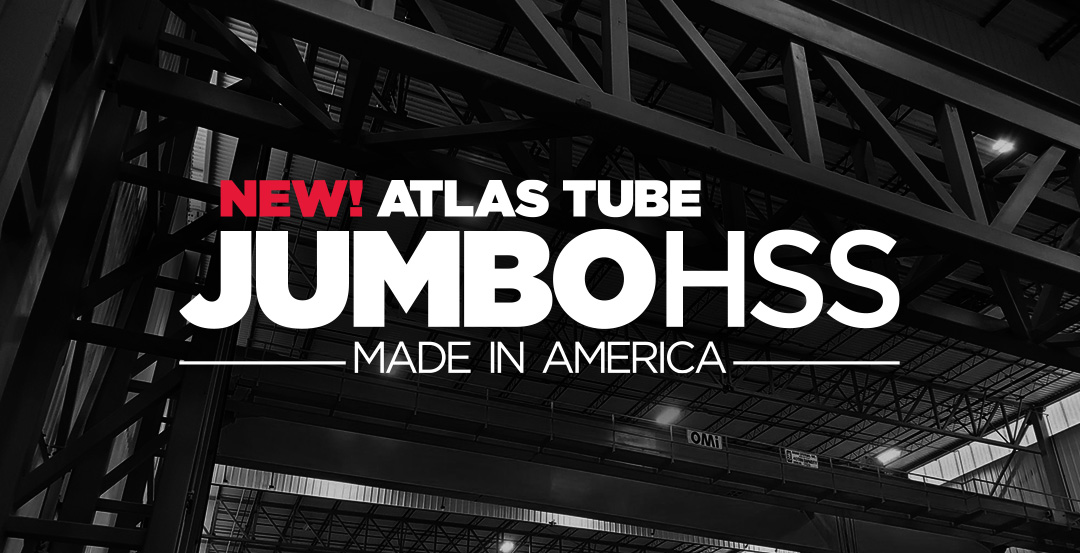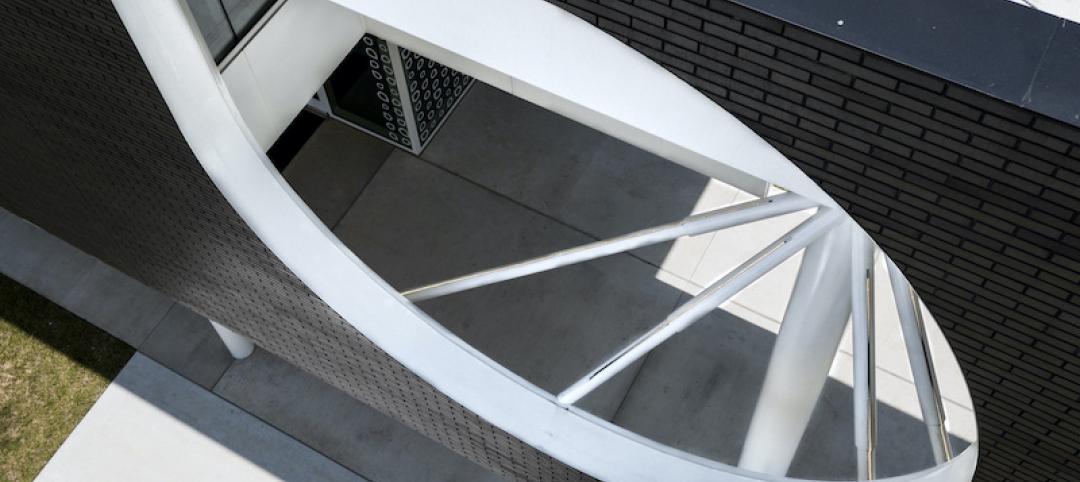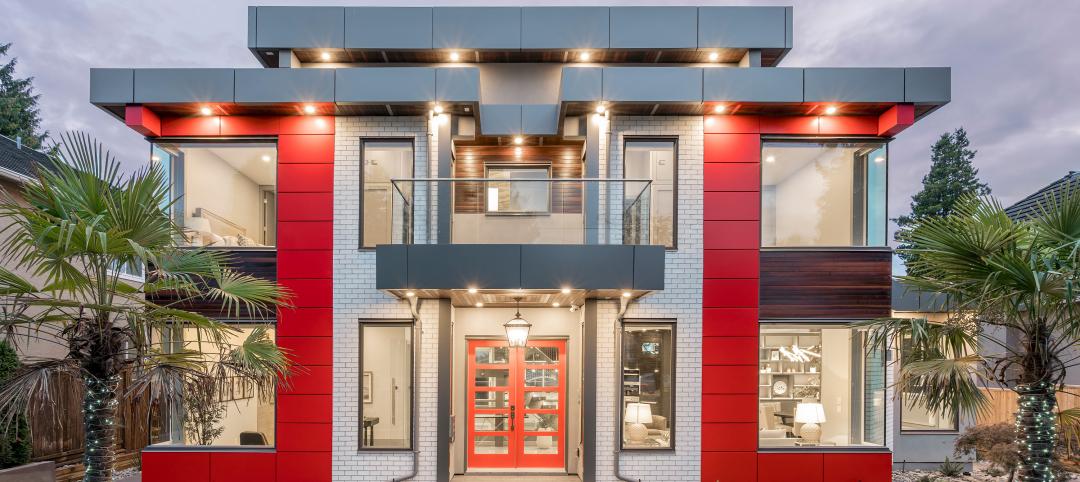Do you use steel hollow structural sections (HSS) in designs and building projects? If not, what factors put you off or keep you away? If we had to guess, we’d venture that one challenge is availability — or lack thereof, especially for larger sizes. Inconsistent rolling schedules limit sourcing options in North America, and the largest pieces are only made overseas, requiring extra months of lead time to be shipped over.
The largest pieces were only manufactured overseas, that is. With the upcoming September opening of Atlas Tube’s new mill in Blytheville, Arkansas, the world’s largest HSS will be rolled in North America, and they’ll be available with the shortest lead times in the industry.
We believe there’s a large, untapped potential demand for our new Jumbo HSS sizes. And equally important, we believe in domestic manufacturing, in creating American jobs and using American ingenuity to make steel a cleaner, more efficient building material. With our new mill and Jumbo HSS sizes, we’re doing even more to bring those values to the market.
New Mill. New Tech.
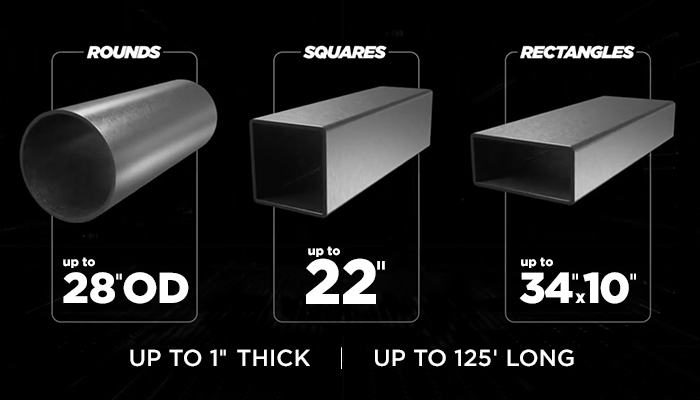
Atlas Tube’s new 515,000-square-foot facility will be the largest continuous electric resistance weld (ERW) tube mill in the world, rolling various shapes up to 1" thick and 125' long with new welding technology designed specifically for our new Jumbo HSS sizes.
But larger sizes are just one piece of the puzzle. Bigger HSS are only useful if fabricators and builders can get their hands on them quickly, so our new mill is also designed around fast, efficient rolling schedules and streamlined logistics.
To start with, our quick-change technology lets us completely switch out rollers and stands in under 60 minutes, giving us the shortest cycle times in the industry. That, in turn, means we can roll and deliver Jumbo HSS of any size and length anywhere in North America with the shortest lead times on the continent.
And the new tech doesn’t stop at the end of the line — freshly rolled HSS feed directly into a fully automated warehouse, making inventory management simpler and keeping lead times short. Plus, with a network of stocking distributors carrying the new sizes, builders will be able to get new Jumbo HSS sizes directly from floor stock.
Domestic Is the Future
But bigger sizes and increased availability are just the start. With the opening of our new mill, Atlas Tube continues to play a leading role in helping return steel manufacturing to North America, creating jobs and bringing a high level of technical sophistication to our industrial processes.
We believe domestic manufacturing is important, both for the direct benefits it brings — like the factory jobs that give back to our communities — and for the future benefits that advanced American technology can bring to bear on problems like lessening the environmental impact of steel production and securing our supply chains.
In fact, for builders interested in minimizing environmental impact, there aren’t many options anywhere better than American-rolled steel. First off, steel is extremely recyclable: 60–80 million tons of steel are recycled every year in North America alone, and the average piece of structural steel — HSS included — is 93% recycled steel scrap.1
Second, American steel manufacturing is efficient — by some measures, up to 10 times more efficient than it was in 1980.2 That means fewer non-renewable resources wasted and better value to the buyer.
Third, American steel manufacturing is much cleaner compared to overseas options, using methods and technologies that minimize emissions and other waste. Of the seven largest steel-producing countries, the U.S. has the lowest CO2 emissions per ton of steel produced and the lowest energy intensity.3
Finally, domestic manufacturing minimizes the carbon footprint from transportation. In the words of Mark Thimons, vice president of sustainability at the Steel Market Development Institute, “One of the most important decisions an owner or architect can make regarding environmental impact is to ensure the building’s steel is produced in North America.”
Atlas Tube Jumbo HSS Sizes Are a Game-changer
Better delivery times, a revitalized American steel industry and cleaner building materials are all well and good, but they don’t mean a thing if the material itself isn’t useful to designers and builders. And in that department, HSS have a whole lot to offer.
HSS can carry up to 30% more axial load.
Compared to wide-flange columns of the same weight, HSS have up to a third more available strength, with the biggest advantages coming at the longest lengths.
That means taller ceilings and longer unbraced spans between columns, perfect for open, airy spaces, as well as for applications like warehouses where floor space is at a premium.
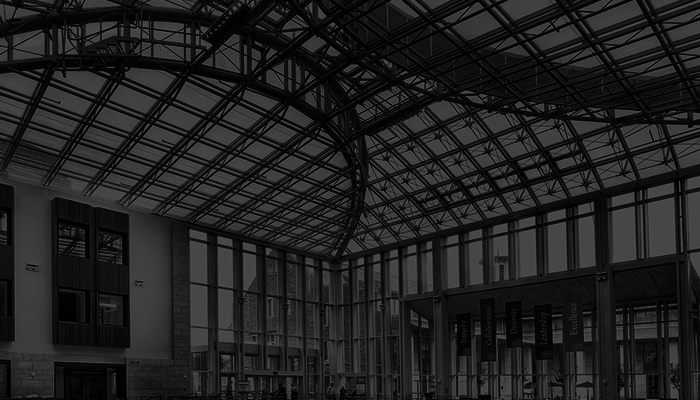 HSS gave Olin Business School at Washington University the tools they needed to crown a new atrium with a stunning, curved glass ceiling.
HSS gave Olin Business School at Washington University the tools they needed to crown a new atrium with a stunning, curved glass ceiling.
HSS can weigh up to 30% less.
Because of their efficient closed shape, HSS can achieve the same strength with less steel, meaning less weight and savings on labor and material costs.
HSS have 200 times more torsional resistance than open sections.
A key consideration for any application that might experience high torsional loads, HSS provide dramatically better resistance than wide-flange sections when it comes to resisting torsion.
That lets architects and engineers explore new ways to create aesthetic appeal or address specific use-case challenges. Additionally, the increased torsional resistance of HSS makes it possible to design seismic resistance into buildings to address concerns around earthquakes or building hardening.
HSS have up to 50% less surface area than open sections.
Without the deep recesses of wide-flange sections, HSS have as little as half the exposed surface area, making them a lot easier to paint, fireproof or otherwise finish. The clean, smooth, painted surfaces of HSS also help prevent dust accumulation, which is critical in manufacturing environments that produce food, beverage, medical products and pharmaceuticals.
And because they also lack the sharp edges where finishes on wide-flange sections usually fail, painted or fireproofed HSS require less maintenance and upkeep, saving even more money over the long run.
Taken together, these advantages mean that Jumbo HSS can help you build taller, wider and stronger, all while using less steel. They’re rolled in America, so you know that Jumbo HSS are made with efficiency and sustainability in mind, with a lower carbon footprint than steel from overseas. And with our new plant, you can be sure that every Jumbo HSS size is available for your project on an industry-leading timeline.
Contact:
Phone: 800.733.5683
Email: info@atlastube.com
Website: atlastube.com
1. American Institute of Steel Construction. “Structural Steel: The Premier Green Construction Material.” https://www.aisc.org/why-steel/sustainability/
2. Wiseman, Paul. “Correction: Trump Tariffs-Steel Industry story.” Associated Press, 2018. https://apnews.com/article/north-america-oh-state-wire-donald-trump-pa-state-wire-business-cae426730cd74e64932e4be7fa5cdebc
3. Hasanbeigi, Ali, and Cecilia Springer. “How Clean is the U.S. Steel Industry?” Global Efficiency Intelligence, 2019. https://www.globalefficiencyintel.com/us-steel-industry-benchmarking-energy-co2-intensities
Related Stories
Sponsored | Voice of the Brand | Aug 17, 2020
Can Sustainable Materials Compete With Virgin Material?
Sponsored | Voice of the Brand | Jul 28, 2020
Why Mineral Wool Makes the Grade as a Continuing Insulation
Sponsored | Voice of the Brand | Jul 2, 2020
Solving the Building Envelope Challenge
Today, solutions for the building envelope need to meet exacting standards on two equally important fronts – long-term performance and enduring aesthetic appeal. In this article, CENTRIA demonstrates how its products meet the standard in two different scenarios – construction of a new hospital in Asheville, North Carolina, and the addition to a popular museum in Pittsburgh.
Sponsored | Voice of the Brand | Jun 5, 2020
Practice Style Transcendence with Brick
Get inspired! Brick’s adaptability has made it the premier building material for centuries even as styles come and go. Nothing says “classic” like brick, but nothing says “innovative” like brick either. Check out some examples of how fired clay brick remains a major presence in the 21st Century designer’s palette.
Sponsored | Voice of the Brand | May 7, 2020
How One Fabricator Uses ALPOLIC MCM as His Calling Card in the Residential Market
ALPOLIC metal composite materials have been used in the architectural and commercial building worlds for years. But recently, architects are starting to specify it for residential and other non-traditional applications. With exceptional warranties and a variety of finishes, it is a perfect fit for homeowners wanting something different.
Sponsored | Voice of the Brand | May 5, 2020
Two Schools Go for Bold Color and Eye-Catching Design
Metal wall panel systems with varying rib patterns and pops of color provide dynamic visual interest in two different new-construction school buildings. PAC-CLAD Precision Series Panels offer an affordable array of 45 standard colors and 12 panel options for endless cladding possibilities.
Sponsored | Voice of the Brand | Mar 10, 2020
How Trim-Tex’s Fast Edge® corner bead saves time & material
Trim-Tex recently rolled out its latest vinyl corner bead innovation, Fast Edge®, promising to drastically cut down on the time and material it takes to finish drywall corners. How much can these corner beads actually save contractors? They put it to the test!


